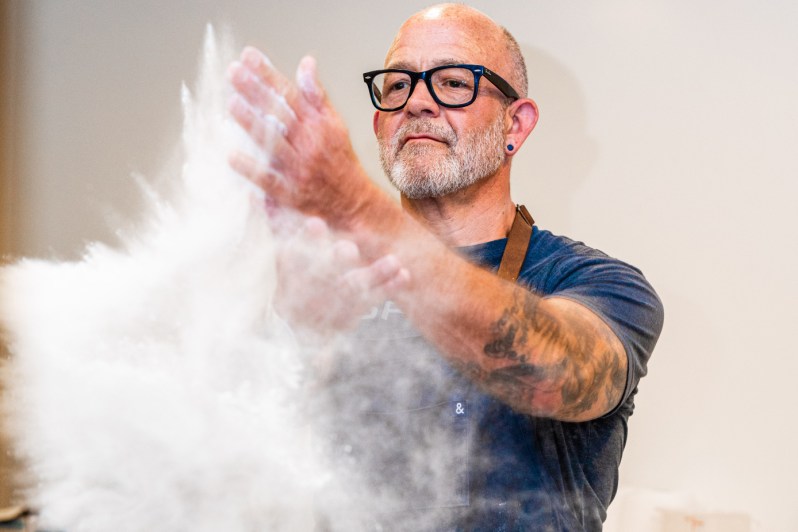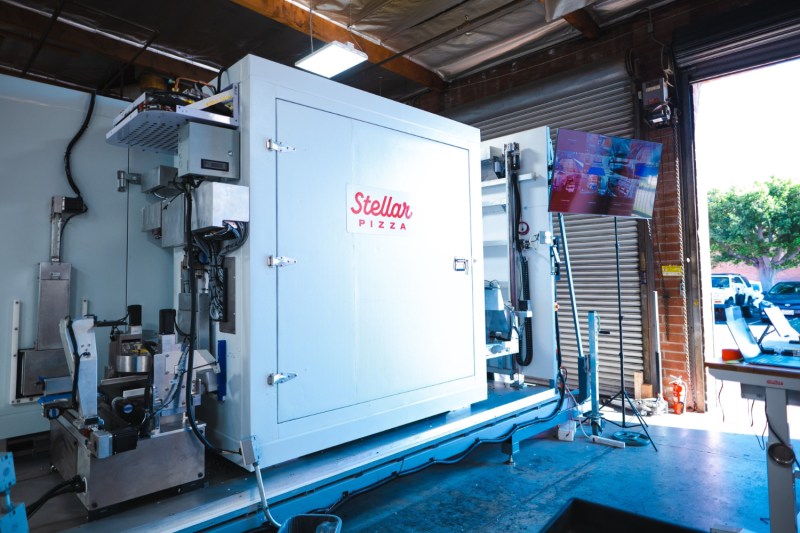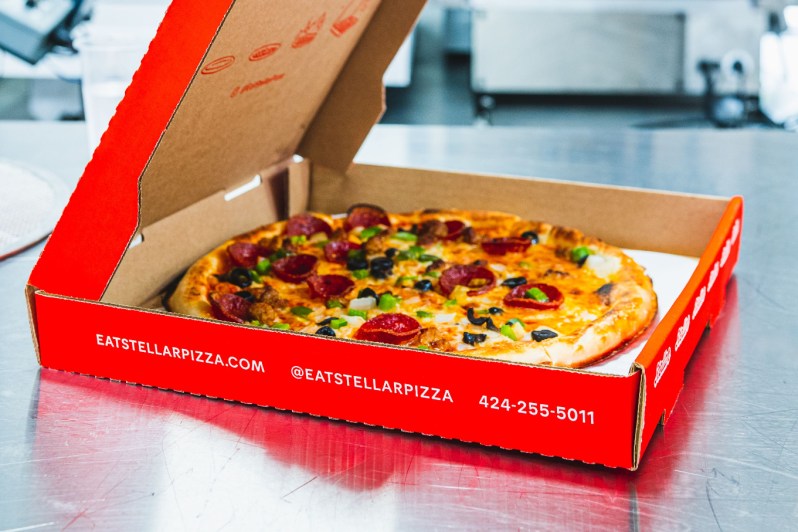Ted Cizma is an interesting dude. He’s the former chef of SpaceX and is in the process of launching a pizza company with a few partners, one that expectedly involves some high-tech gadgetry. It’s a futuristic approach to a restaurant scene that could use a past-pandemic boost.
Cizma got his start with SpaceX a little over a decade ago. “Elon hired me in 2011 to build a restaurant in the middle of the rocket factory at SpaceX headquarters,” Cizma says. “His two mandates were it has to look and feel like it belongs in a 21st Century rocket factory, and it has to be badass.”

Like most things at SpaceX, the culinary program was pretty impressive. It grew to a staff of 200 and served some 1.4 million meals a year across the company’s American locations. He pocketed a few lessons during his tenure there.
“The one that sticks with me is that each dish you prepare is no more or less important than the last meal you made, or the next,” he says. “When you’re serving 5,000 meals a day, that takes on a certain significance.”
Cooking on a scale like that requires efficiency and perhaps even some automation, qualities that set him up well for his current venture. Cizma is very excited about the new project, Stellar Pizza. Not only will his team be making wholesome pizzas at a price most can afford, but he’ll get to utilize a robot along the way. And it’s pretty cool to witness, as this video from L.A. Weekly suggests. The machine looks like something out of WALL-E, turning a ball of dough into a very symmetrical-looking pizza in a matter of minutes. It dispenses a perfect amount of sauce, weighs out the cheese portions, and can handle ten toppings. The thing can bake a pizza from scratch in under five minutes.
The robot is largely the work of Benson Tsai, a fellow former SpaceX employee who switched from constructing rockets to culinary robotics. The idea is that the machine will be the headquarters of the operation (based in southern California) and a person will be on hand to collect the finished product and hand it off or deliver it to the buyer.

“Our founders wanted to create a business that would be groundbreaking and disruptive, but which could serve the greater good by delivering a superior product at a fair price and available to all,” Cizma says. The prices are fair, indeed, ranging from about $7-$12 for a 12-inch pizza. This is music to the ears of us all as we buckle down amid a bumpy economic future. Food prices have shot through the roof, forcing us to be smart at the grocery store and even run short of key ingredients, from olive oil to Sriracha Sauce. This business model is all the smarter as we continue to embrace the fast-casual approach to dining. Increasingly, consumers want good grub that doesn’t take forever to prepare.
What does the future hold? Well, Cizma seems to be one, if not several steps ahead of the pack. What he’s doing seems ahead of its time but perhaps it’s been a long time coming. “The last few years have had sort of a Darwinian effect on restaurants,” he continues. Historically, the hospitality industry has been very analog and resistant to change and innovation. The successful restaurants of the future will be the ones who make the investment in new technology and adopt modern processes and techniques.”
Expect to see restaurant robots more often, not just making your food but presenting it as well. In industries like food where entry-level pay is far from great, it’s usually only a matter of time (these days, anyway) until artificial intelligence and machinery enter the scene. Cashless transactions will surely continue, and we can expect to see improved tech in all sectors of the field, from setting up reservations to handling takeout.
COVID has played a bit part, of course, forcing just about every industry to look at the mirror and evolve accordingly. “There was a mass exodus of line-level restaurant employees during the pandemic,” Cizma says. “In order to survive in a landscape with a greatly diminished labor pool, restaurants will need to automate and streamline as many operational processes as possible.”

Now, most of us are still making pizzas the old-fashioned way at home, without AI. We may be using high-temperature pizza ovens, but we don’t quite have access to robots yet. Cizma still has some sage advice for the pizza lover, and maker, in us all. “Less is more,” he says of the craft. “Take your time.”
He also advocates for using less yeast and allowing your dough, arguably the most important part of any good pie, to ferment slowly. Oh, and always go with quality as you are what you eat. “Don’t skimp on the ingredients,” he adds. “Just like a computer. Garbage in, garbage out.”


